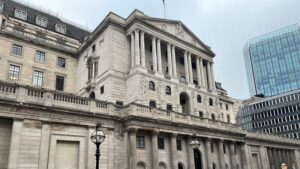At the same time, they are being told to be brave and spend more while the number of options they have to spend drastically reduces.
The level of debt the UK government has means that it will not be able to grow its way out of the problem and its own deleveraging coupled with consumer leveraging is what is needed. The former has started but the latter is considerably further away – consumer confidence is weak, the threat of unemployment is still there, the price of things that people rely on (food, energy etc) is rising and real income is falling.
High street names
Retailers are already seeing a fall in demand from consumers and this is contributing to the recent spate of high street names in trouble. The fashion retailer Jane Norman is the latest to join Habitat and Dolphin and Kitchen Direct owner HomeForm. This came a couple of months after Oddbins became the most recent high street wine retailer to bite the dust, going into administration in April.
Others firms are looking at the possibility of spinning off their retail brands with Whitbread looking at options for Costa Coffee while Kesa Electricals is considering the sale of electrical retailer Comet.
The Centre for Economics and business Research undertakes a regular disposable income survey for Asda and June was its sixth consecutive month of decline; in the year to March, the index of real disposable income suggests that incomes were 5.5% lower.
Stuart Thomson, chief economist at Ignis Asset Management, points out the contradictions between all of this and how the Office for Budgetary Responsibility sees consumers’ spending patterns.
“At the heart of the OBR’s forecasts for the UK economy is an assumption that consumers will increase their leverage over the next few years from160% of disposable household debt to 175%,” he explains.
Consumer pressure
“This rosy scenario assumes that the only thing that consumers have to fear is fear itself. If they have the courage to keep spending, growth will match target and the resulting improvement in banking profitability will encourage a relaxation in lending criteria and enable consumers to achieve greater levels of debt.”
In the medium term this may not seem that unrealistic with Thomson expecting inflation to fall in the second half of this year, getting back to the 2% target by February 2012. The best long-run measure of inflation, he adds, is wages and average earnings slowed further in April to just 1.8%.
From an investment point of view, not much is changing even though the consumer confidence data that is produced later this week is expected to still be negative. Chris Alexander, head of investment strategy at BNP Paribas Wealth Management, is one who sees “few reasons to take a less negative retail sector stance”.
The near-term outlook for UK retailers is poor, for the UK government is worse and for the UK consumers worse still; but the medium-view picture is far healthier, with consumers perhaps recovering quickest of all.







